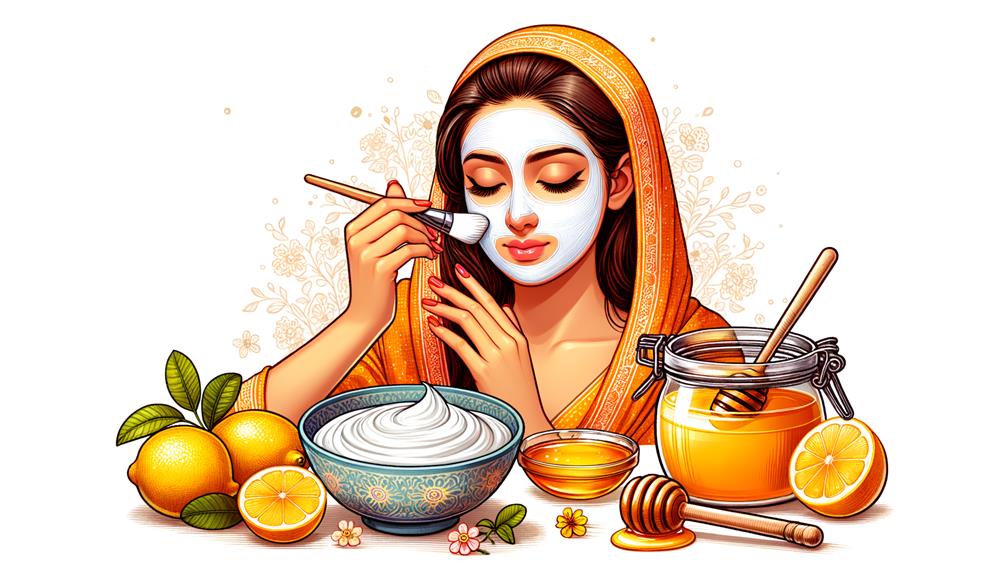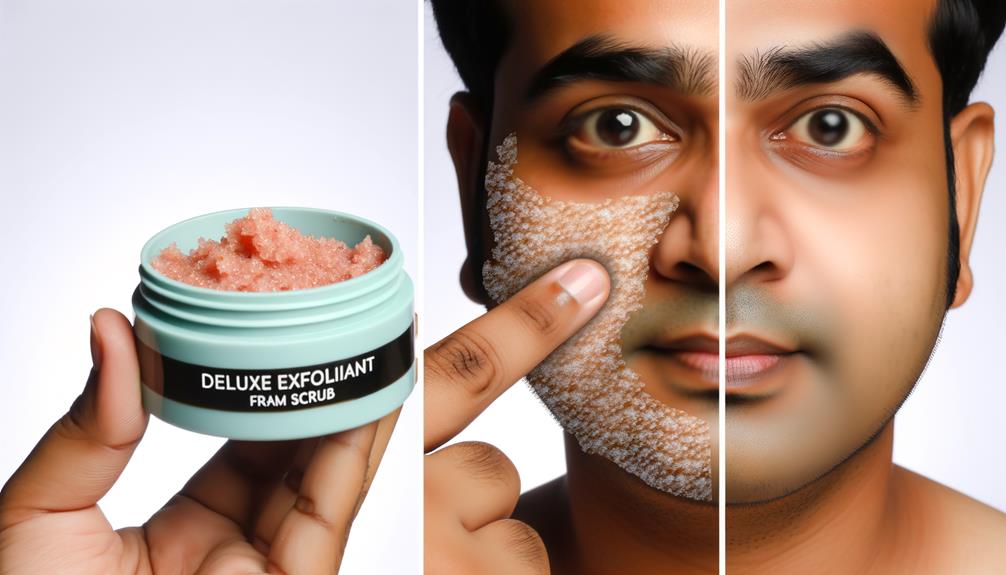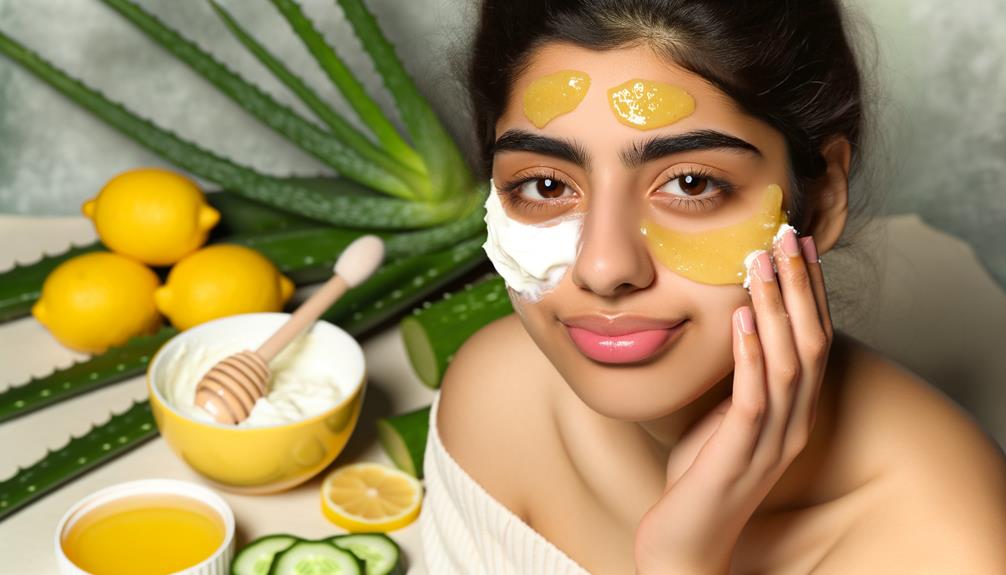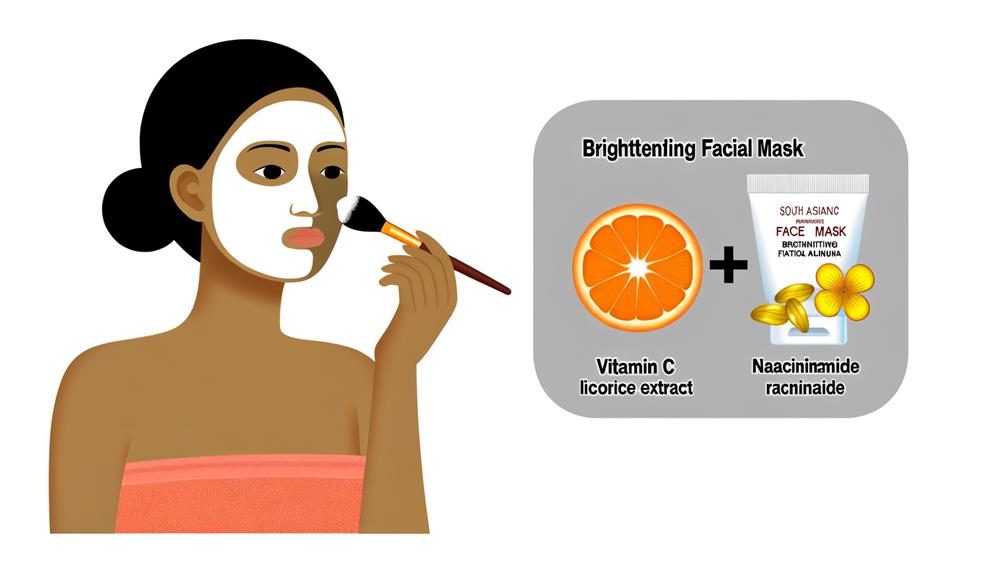
As individuals strive to achieve a clearer and brighter complexion, the quest to remove a tan from the face becomes a common pursuit. Whether due to sun exposure or other factors, a tan can be effectively addressed through various practical methods.
From gentle exfoliation to the use of specific skin-brightening ingredients, there are numerous ways to gradually diminish a tan and restore a more even skin tone. Understanding the nuances of these methods and their suitability for different skin types is essential for achieving successful results.
In this article, we will explore a range of proven techniques and remedies to help you effectively remove a tan from your face, offering a comprehensive guide to cater to diverse skin needs and preferences.
Key Takeaways
- Exfoliate the tan away with a gentle sugar-based facial scrub, using brown sugar for sensitive skin or salt as a substitute for white sugar.
- Use products with skin-brightening ingredients like niacinamide, glycolic acid, kojic acid, and licorice root to expedite the fading process.
- Protect your skin from further sun damage by wearing sunscreen and moisturize regularly to keep it hydrated and prevent further tanning.
- Consider using DIY facial masks with ingredients like tomato juice, rice flour, lemon juice, honey, banana, papaya, toothpaste, or orange juice to lighten the skin and fade the tan.
Tan Removal Through Exfoliation

Exfoliation is a key method for effectively and safely removing unwanted tan from the face, providing a gentle and practical approach to achieving a lighter complexion. To remove skin tan from the face, consider using a gentle sugar-based facial scrub. For individuals with sensitive skin, brown sugar can be a suitable alternative. It's important to avoid applying excessive pressure during exfoliation to prevent dryness or irritation.
If needed, salt can be used as a substitute for white sugar, but it's advisable to avoid coarse organic sugar as it may be too abrasive. Additionally, products with skin-brightening ingredients such as niacinamide, glycolic acid, kojic acid, and licorice root can aid in the tan removal process. Regular use of these products can expedite the fading process.
To protect the skin from further sun damage, it's essential to wear sunscreen and ensure the skin remains moisturized. For faster results, consider incorporating skin-lightening creams or serums into the skincare routine.
DIY Facial Masks for Lighter Skin
To complement the exfoliation process for removing tan from the face, exploring DIY facial masks for achieving lighter skin can be an effective and natural approach. Using home remedies for tanning on the face can help in achieving a brighter complexion.
A mixture of 1 teaspoon of rice flour with the juice of 1 tomato can be applied as a scrub to the face. The ascorbic acid in tomato juice can aid in lightening the complexion.
Another effective mask is made by blending the juice of 1 medium-sized lemon with 1 tablespoon of honey. This can be applied daily for up to 2 weeks to fade the tan.
Additionally, a mask made from mashing 1 medium-sized banana with ½ to 1 cup of cubed papaya, adding 2 teaspoons of honey, and leaving it on the face for 15 to 20 minutes can also help in achieving a lighter skin tone.
For a quick remedy, mixing a dime-sized amount of toothpaste with 3 tablespoons of tomato juice, applying it to the face, and leaving it on for 5 to 10 minutes can also aid in achieving lighter skin.
These DIY facial masks provide natural and effective methods for achieving a lighter skin tone.
Other Home Remedies for Tan Removal

For additional home remedies to remove tan from your face, consider utilizing simple and natural ingredients that can effectively aid in lightening the skin tone. Here are some other home remedies for tan removal:
- Wipe your face with a cotton pad soaked in diluted apple cider vinegar. Dilute the vinegar with water to avoid skin irritation. Apple cider vinegar has antibacterial properties that can clear up blemishes.
- Steam your face over the stove for 20 minutes at least once a day. Heavy sweating can act as an exfoliant and fade tanning cream quicker.
- Do an intense workout to work up facial sweat. Relax in a sauna or steam room for 20 minutes. Wipe your face with a soft towel after sweating. Add a few drops of eucalyptus oil to the steam for sinus clearing.
- Swim in a chlorinated pool to break down tanning lotions. Avoid exfoliating immediately after swimming if you have dry skin. Ocean water acts as a mild exfoliant to remove tanning cream.
These additional home remedies offer simple and effective ways to remove tanning and reduce tan naturally, providing options for those looking to remove sun tan instantly or remove sun tan quickly.
Utilizing Sweat and Steam
After exploring other home remedies for tan removal, we can now consider the beneficial methods of utilizing sweat and steam to aid in fading tanning cream and reducing tan naturally.
Sweating and steaming can be effective ways to help remove a tan from your face. Engaging in an intense workout to work up facial sweat, relaxing in a sauna or steam room for 20 minutes, and swimming in a chlorinated pool can help break down tanning lotions and fade the tan. Heavy sweating can act as an exfoliant, aiding in the removal of tanning cream.
Moreover, adding a few drops of eucalyptus oil to the steam can provide sinus-clearing benefits. After sweating, wipe your face with a soft towel to remove the sweat and impurities. However, it's essential to avoid exfoliating immediately after swimming if you have dry skin, as it can lead to further dryness and irritation.
Using Brightening Ingredients

Consider incorporating moisturizers containing niacinamide and professional chemical peels into your skincare routine to gradually restore a brighter tone to your skin. Niacinamide is a safe and effective ingredient for skin lightening, while professional chemical peels can help in reducing tan and restoring a brighter complexion. Additionally, products with glycolic acid can aid in lightening the skin, and using a soap containing kojic acid can also contribute to safe skin lightening.
- Niacinamide: Safe and effective for skin lightening
- Professional chemical peels: Gradually restore brighter tone
- Glycolic acid products: Aid in lightening the skin
- Kojic acid soap: Contributes to safe skin lightening
Incorporating these brightening ingredients into your skincare routine can help in the removal of tan from your face and achieve a brighter, more even complexion. Remember to use these products consistently and protect your skin from sun exposure by wearing SPF facial moisturizer.
Frequently Asked Questions
Are There Any Natural Remedies That Can Help Remove a Tan From the Face?
Natural remedies such as exfoliation with sugar-based scrubs, using skin-brightening products with niacinamide or glycolic acid, and DIY masks with tomato juice or honey can help fade a tan from the face. Always follow with sunscreen and moisturizer.
How Often Should I Exfoliate My Face to Help Fade a Tan?
Exfoliate your face 2-3 times a week to help fade a tan. Use gentle sugar-based scrubs or products with skin-brightening ingredients like niacinamide, glycolic acid, kojic acid, and licorice root. Protect and moisturize your skin regularly.
Can Using Sweat and Steam Really Help in Removing a Tan From the Face?
Yes, using sweat and steam can help remove a tan from the face as it acts as a natural exfoliant. Sweating during intense workouts or steam sessions can aid in fading tanning cream.
What Are Some Potential Side Effects of Using Skin-Brightening Ingredients for Tan Removal?
Potential side effects of skin-brightening ingredients for tan removal may include increased sun sensitivity, irritation, dryness, and allergic reactions. It's important to perform a patch test and use sunscreen to mitigate these risks.
Are There Any Specific Precautions I Should Take When Using DIY Facial Masks for Lighter Skin?
When using DIY facial masks for lighter skin, it's important to consider potential skin sensitivities, such as with lemon juice and honey. Patch-test new ingredients, avoid irritating formulas, and consult a dermatologist if unsure.





